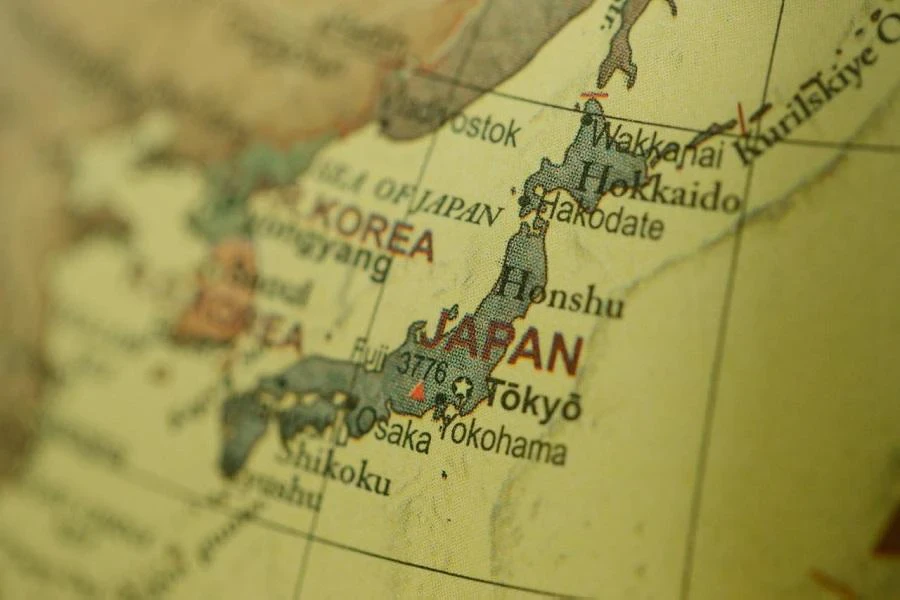Japan’s imports of goods have shown a remarkable upward trend from 2018 to 2022, despite a brief dip in 2020 due to disruptions in the global health industry. Starting from $748,488 million in 2018, the import figures rebounded significantly, reaching $897,242 million by 2022. This marked an overall growth trend, culminating in a substantial 16.6% increase in 2022 compared to the previous year.
Such a stable rise highlights the robust expansion of Japan’s import sector and underscores the country’s strong economic adaptability and increasing demand within the global trading environment. This is certainly good news for anyone interested in starting an import business in Japan or keen to export goods to Japan, including ecommerce sellers who wish to understand how goods can be imported into Japan for online sales.
Indeed, current business owners in Japan or international sellers looking to diversify their product offerings or seeking entry into the Japanese market can benefit from a basic guide on how to import to Japan. Read on to learn more about the key legal requirements, the steps involved, and the challenges and solutions for importing to Japan.
Table of Contents
1. Essential legal requirements and compliance
2. Key steps for importing to Japan
3. Overcoming import challenges
4. Unlocking Gateways to Japan
Essential legal requirements and compliance
The landscape of required permits and licenses

The importation process in Japan primarily mandates the import permit, applicable to all goods entering the country. While most goods can enter Japan without stringent controls, specific categories such as pharmaceuticals, food products, and electronics require additional approvals from relevant authorities, in addition to the standard import permit.
For instance, the process for importing and marketing medical devices and pharmaceuticals is governed by the Ministry of Health, Labor and Welfare (MHLW) in Japan. It is mandatory for the importer to either hold a Marketing Authorization Holder (MAH) license or rely on existing MAHs within Japan to manage regulatory responsibilities such as obtaining import permissions and complying with pharmaceutical regulations.

Moreover, there are two major authorities often involved in the import approvals of these separate product categories, as outlined on the Japan Customs website: the Minister of Economy, Trade and Industry (METI) or the Director-General of Customs. Under METI’s organization and management, the Japan External Trade Organization (JETRO) operates as a facilitator of international trade. JETRO supports importers by offering guidance and resources, providing crucial information and consultations for successfully launching and managing an import business in Japan.
The importation of food products into Japan serves as another clear example, often requiring a quarantine certificate and special licenses issued by the relevant ministries. While the MHLW provides an overview including the structured outline of the importation process for food products that discusses document examination and physical inspections, JETRO offers anecdotal guidance on handling specific issues during the import and customs clearance.
In essence, to equip with the necessary tools for successful imports, it is advisable for the importers to consult the relevant ministries for additional import approvals needed to ensure compliance with regulations overseen by related authorities. JETRO meanwhile plays a pivotal role in providing valuable resources, such as general guidance on consumer product import regulations and detailed procedures for specific products like cosmetics.
Taxes and duties

Goods imported into Japan are subject to three main types of duties and taxes: Customs duty, consumption tax, and additional internal taxes, which are applicable for more regulated products such as liquor, tobacco, and LPG. The system primarily uses ad valorem rates but may apply specific or compound rates for certain goods like alcoholic beverages or cereals.
At the same time, temporary measures and international agreements such as World Trade Organization (WTO ) concessions or Japan-Singapore Economic Partnership Agreement (EPA) might modify these rates in favor of international trade dynamics. Preferential rates are also given to developing countries under the GSP (Generalized System of Preferences) scheme, aiming to encourage imports from these regions.
It’s essential for importers to refer to the Customs Tariff Schedules of Japan to determine the appropriate classifications and duty rates for their goods. Available online for purchase for an official bilingual version in both Japanese and English comprehensive guide, it lists all items according to the Harmonized Commodity Description and Coding System (HS), detailing tariff rates like General, WTO, Preferential, and Temporary rates.
Japan Customs also implements the Advance Classification Ruling System, which allows importers and other relevant stakeholders to confirm the tariff classification and duty rate for goods before importation. The importers can obtain a predetermined tariff classification prior to import declaration. Although this is not mandatory for all importers, it is highly beneficial for reducing clearance delays as the system facilitates accurate cost estimations and assists in planning sales strategies by providing early knowledge of applicable duties. Importers need to fill out the necessary application form in order to initiate the advance classification ruling process and for inquiries that fulfill the conditions, the Customs will issue a formal response, which should be included with the import declaration (the second step in the importing process) to aid in the customs examination process.
Documentation needed

Documentation involved in the importation to Japan can be divided into two groups as follows:
Mandatory documents
- Invoice: All essential information necessary for taxation, for example, freight accounts and insurance certificates.
- Bill of Lading or Airway Bill: Shipping details and tracking records.
- Packing Lists: Similar to invoices, detailing the contents and value of the shipment.
- Customs duty payment slip: proof of payment if customs duties are applicable.
Conditionally required (optional) documents
- Regulatory compliance documents: Import certificates, approvals, and licenses required per specific regulations such as those necessary for imports of regulated goods including hazardous materials, medical devices, electrical appliances, and others. Basically, items with health, safety, or environmental impact certifications and approvals by entities like the Minister of Economy, Trade and Industry or the Director-General of Customs in Japan, as applicable.
- Certificates of Origin: Required where a World Trade Organization (WTO) rate or a preferential rate is applicable.
- Tax-related documents: Application or certificate for tax-exempt approval is necessary for goods subject to internal consumption tax exemptions, detailed statement on reductions of, or exemption from customs duty and excise tax should be included too. For goods requiring complex tax or duty calculations, a Statement of calculation must be submitted.
- Financial transaction documents: For instance, a deferred tax confirmation slip is required for managing deferrals.
Key steps for importing to Japan

One primary objective of importing to Japan is to secure an import permit, which serves as the official authorization that allows imported goods to be recognized as domestic items. This recognition enables their release to the consignee. With an understanding of this essential concept in mind, let’s explore the key steps for importing to Japan:
- Preparation: Gather all required documents, including invoices, certificates of origin, import approval certificates, etc. as cited in the previous section accordingly.
- Declare the goods: Complete and submit the import declaration form (Customs Form C No. 5020) to the customs office with jurisdiction over the bonded area where the goods are stored. Detailed information about the goods along with the necessary documents must be included accordingly. It’s advisable for the importers to consult with customs for declarations outside standard hours. If necessary, for further details regarding import permit applications and declaration procedures, importers are encouraged to consult with the relevant customs office or area customs counselor.
- Submit required documentation: Present the completed declaration form and accompanying documents to the customs office during their office hours.
- Customs inspection and approval: The customs office should review the submitted documents and conduct any necessary inspections before approval to proceed to the next step.

- Payment of duties and taxes: Pay the applicable customs duties and excise taxes, which vary depending on the nature of the goods and their intended use.
- Issuance of Import Permit: After verification of documents and successful inspections (if any), once taxes are paid, the customs office will issue an import permit, formally authorizing the goods for domestic distribution
- Release to consignee: Once the import permit is issued, the goods are cleared from the customs bonded area and released to the consignee.
Overcoming import challenges

The fact that Japan Customs operates within a strict regulatory environment with high standards presents its own set of challenges. However, these challenges are not insurmountable, particularly for those who believe that engaging in business in Japan offers unique opportunities and are committed to participating in the dynamic Japanese market.
- Language barriers: Even though the official Japan Customs website does provide quite a few English forms, the necessity for some documentation and regulatory filings to be submitted in Japanese poses significant challenges, especially given the absence of key forms such as the Import Declaration Form (Customs Form C No. 5020) in English on official platforms. As a result, working side by side with local bilingual professionals for the importation process is vital for both ensuring compliant submissions and for facilitating effective communication with local authorities and partners. Through such an engagement, this approach also aids in understanding and adapting to Japanese business practices.
- Navigating regulatory complexity: The regulatory environment of Japan is characterized by stringent and unique standards across different sectors. Importers often face challenges with multiple regulations, including additional legal requirements beyond customs laws for securing approvals and permits. Certain Industry-specific licensing controlled by selective associations can also complicate market entry. Employing local regulatory experts or consultants can provide necessary guidance on compliance and simplify the import process. Retaining a customs broker can also be beneficial for handling the extensive paperwork and navigating the regulatory landscape efficiently.
- Cost Management: Despite relatively low tariffs, there are some non-tariff barriers that may significantly elevate the cost of importing into Japan. These include the need for product adaptations to meet unique Japanese standards and the requirement for demonstrated local experience, which can necessitate substantial initial investments. In order to lower such associated costs, importers may leverage trade agreements for preferential tariffs and explore government-sponsored duty relief programs. Establishing local partnerships and networking within industry circles are also helpful strategies for mitigating costs and facilitating market entry.
Unlocking gateways to Japan

It’s important for the importers to kick-start the navigation of the complexities of the Japanese import market with a clear understanding of essential legal requirements and compliance. The landscape of required permits and licenses varies significantly depending on the products and their intended usage, often subject to additional permissions beyond the standard import permit. Furthermore, importers face customs duties and consumption taxes, along with other internal taxes applicable to certain products like liquor and tobacco. The documentation process requires meticulous preparation, including mandatory documents such as invoices and customs duty payment slips, as well as optional documents for additional approvals when required.
The steps involved in importing to Japan are methodical and require diligent preparation. Starting from the declaration of goods, followed by the submission of required documentation, each step is critical to ensuring compliance. Customs inspections and approvals lead to the crucial stages of paying duties and obtaining the necessary import permit. Finally, the successful release of goods to the consignee marks the completion of the import process. Navigating language barriers, regulatory complexities, and cost management are integral to unlocking gateways to Japan effectively, ensuring that the import process aligns with both compliance and business efficacy.
For more insights and a deeper understanding of industry practices, visit Alibaba.com Reads regularly to discover a wealth of ideas and business updates designed to enhance knowledge in wholesale and logistics.

Looking for a logistics solution with competitive pricing, full visibility, and readily accessible customer support? Check out the Alibaba.com Logistics Marketplace today.




